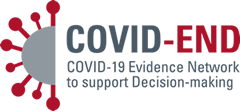Informing decision-making
At the individual level, CPGs, like HTAs, aim to improve the quality of patient care and patient outcomes by recommending interventions with demonstrated benefits, while discouraging the use of ineffective or potentially harmful interventions. At the macro level, these should be responsive (essential during a pandemic) and influence public policies, reduce unnecessary variations in practice, and lessen disparities, thereby promoting equitable, efficient, and high-quality healthcare. Importantly, this will empower patients to be active participants in their care and care planning. The main difference is that HTAs are focused on health technologies and their financing, aiming at fair allocation of healthcare resources among the whole population served (Woolf et al. 1999; Daniels, 2000).
For both CPGs and HTAs, multiple considerations (e.g. feasibility, acceptability, equity) should be made beyond clinical efficacy to ensure these goals are achieved. Whether these goals are achieved when using simplified processes for rapid responses, such as was the case during the COVID-19 pandemic, remains a subject of debate, calling for defining what is absolutely necessary and sufficient to avoid misleading clinical and policy decision-making.
